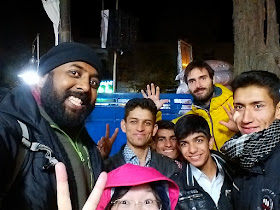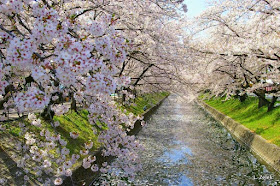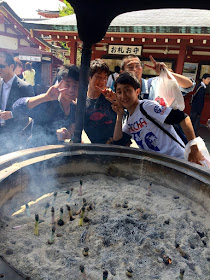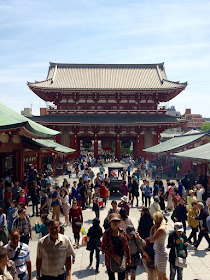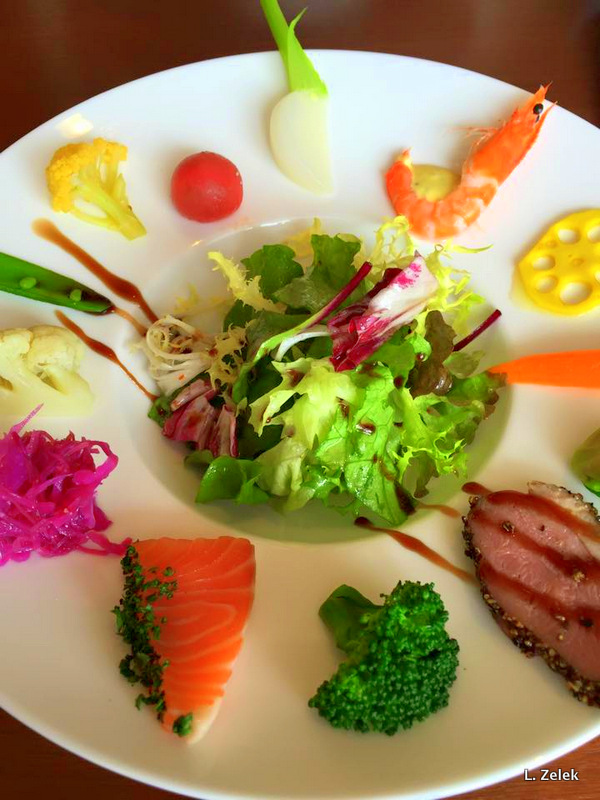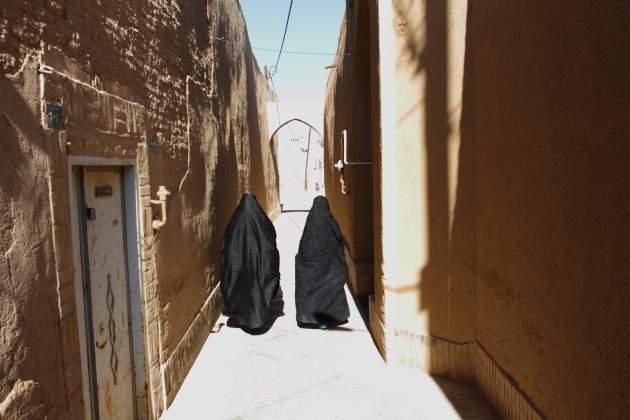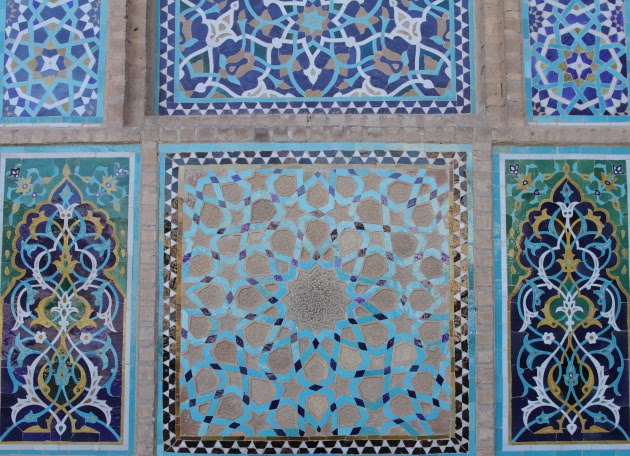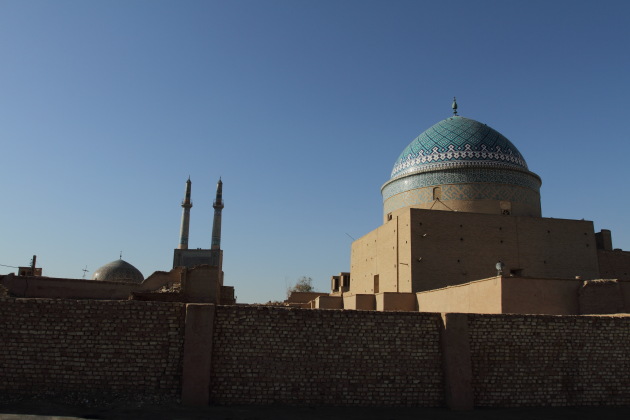If you are planning your next holiday to this kingdom, you might be interested in these 10 amazing things that one can experience here. These are based on my personal backpacking experiences through this glorious kingdom.
1) Watch Banteay Srei temple glow with the first rays of the morning sun at Siem Reap
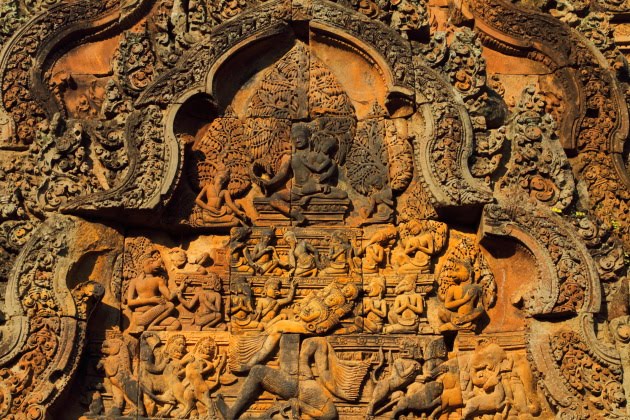
This is not one of the temples on the main Angkor trail, but definitely the prettiest. Tucked some 35 kms away from Siem Reap, the 10th century temple dedicated to Lord Shiva, Banteay Srei’s intricate carvings is worth a good long visit. Like the famous Angkor Wat sunrise, the best time to visit this temple is also around sunrise and this is when all the carvings of this temple that is carved out of red sandstone glow in the orange rays of the early morning sun. As a lover of Hinduism, you will find a lot of rare carvings here.
2) Relax on the white sandy beaches of Koh Rong Island

Popular beach destinations of South East Asia are in Thailand, Malaysia, Indonesia and the Philippines. But, no one thinks about Cambodia as a possible pristine beach holiday destination. Which is why, it earns the off-beat beach holiday destination tag. The southern reaches of Cambodia are blessed with steamy dense tropical forests and pristine white sandy beaches. And a little further to its south are an amazing group of islands called Koh Rong and Koh Kong that offer a seriously solid beach holiday experience. I absolutely love Koh Rong, its beautiful forests, mangroves, long and deserted white sandy beaches and the warm waters of its gentle lapping waves. This is also the place that is known for phosphorescent plankton that glows in the night during certain times of the year and one that offers a very special swimming experience.
3) Catch the Famous Sunrise Shot at Angkor Wat
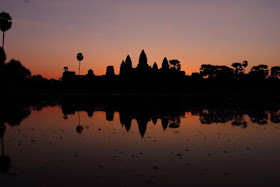
I don’t think I need to say much about this iconic activity. Almost all websites covering Cambodia, Cambodia guide books, magazines, travel books and more talk about this famous sunrise. In spite of all the hype, the sunrise is actually worth it. But, do wake up early and make sure you find yourself a good spot to park your backside and your camera gear or else be prepared to jostle amongst thousands of visitors who arrive every morning with their heavy camera artillery. And before you sleep that previous night, do pray that it rains heavily that night. As usually after heavy overnight rains, the air is clearer and the sunrise is vibrant. If you are not lucky to catch that perfect sunrise on your first visit, do not sulk. Rather, spend your time doing other things in Siem Reap and hope you get lucky with your next Angkor Wat sunrise.
4) Enjoy Fresh Seafood at Sihanoukville

At about a 6 hour drive from the capital of Phnom Penh, Sihanoukville is your beautiful, yet busy coastal town with plenty of gorgeous beaches. The beaches here are good, but not special, but the locals sure do rave about the quality of seafood here, especially if you love squids, prawns and lobsters. Apparently, the coast of Sihanoukville is one of those few places in the world where squids breed and the baby squids here are quite the rage. In addition to the fresh seafood, this is also the place where you can get a taste of some of the best in Cambodian cuisine. If you do not have the time to explore the offshore islands, this is your ideal bet for a good beach holiday in Cambodia not too far away from the mainstream cities, thus giving it easy access.
5) Become one with the 216 amazing faces of Bayon Temple

Angkor wat is famous for sure, but the temple that I absolutely love has to be the Bayon temple. I have visited this temple like 5 times and every single time, my eyes light up and my mind goes into a frenzy as I lose myself in the maze of these 216 faces (56 towers with 4 faces each). I feel like each face tells a story to you. Words don’t do justice to this temple. One has to see it for real to understand the true awesomeness.
6) Float in the floating village of Chong Khneas
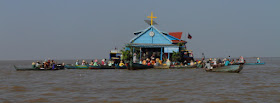
Floating churches, floating schools, floating houses, floating restaurants, floating gas stations, floating grocery stores…well, the whole world floats in the village of Chong Khneas. Located on the Tonle Sap lake, this floating village lives completely on the produce of the lake, which is rich in fish and shrimps. You have to experience this floating world for at least one night to truly understand the local way of living. There is nothing here in terms of natural beauty as there is water everywhere, but it is this ancient floating culture that is special. Just experiencing it gave me a high.
7) Indulge is some tubing at the laidback riverside town of Kampot

If there is one place where all you want to do is go out on those lazy swims, eat late and long brunches, read many books, practice your notes on your guitar or just do what gives you happiness, it has to be Kampot. This village situated by the Praek Tuek Chhu river offers those delightfully quite riverside accommodation where you can just put your feet up and do as you please. And when you get bored and need some adventure outlet, you can either hit the river or cycle up to the mountain nearby for some adrenaline rush.
8) Explore the Flooded Forests of Kompong Phluk
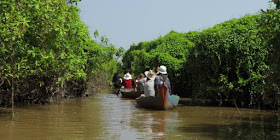
Located deep in the Tonle Sap are the flooded forests of Kompong Phluk. There are motorbikes, cars or buses here. Boats are the private and public transport here. The whole village floats and keeps moving in search for better fish. Whether it is the place of worship, schools, homes or shops, everything moves with the village. As a visitor, you have to take a canoe to navigate these shallow and densely forested waters. If you stay here longer, you can learn all about their special shrimp farming technique and be mesmerized by their floating culture that is far away by the civilized world.
9) Bite into some exotic insects at Phnom Penh
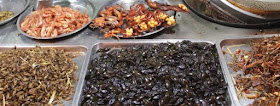
The Khmer Rouge terrorized the people of Cambodia to survive in the wild and which is why I think the people took a liking to insects and reptiles. The Khmer Rouge is long gone, but this fascination for insects still remains. If you are brave enough to dig into those crunchy tarantulas or roaches or bite into those maggots or dare to get a taste of a scorpion or a baby snake, there is no better place to experience this than the streets of Phnom Penh. From crickets to grasshoppers, from scorpions to tarantulas and from maggots to snakes, there are a lot of exotic creatures on the menu here.
10) Understand the trail of terror laid out during the Khmer Rouge
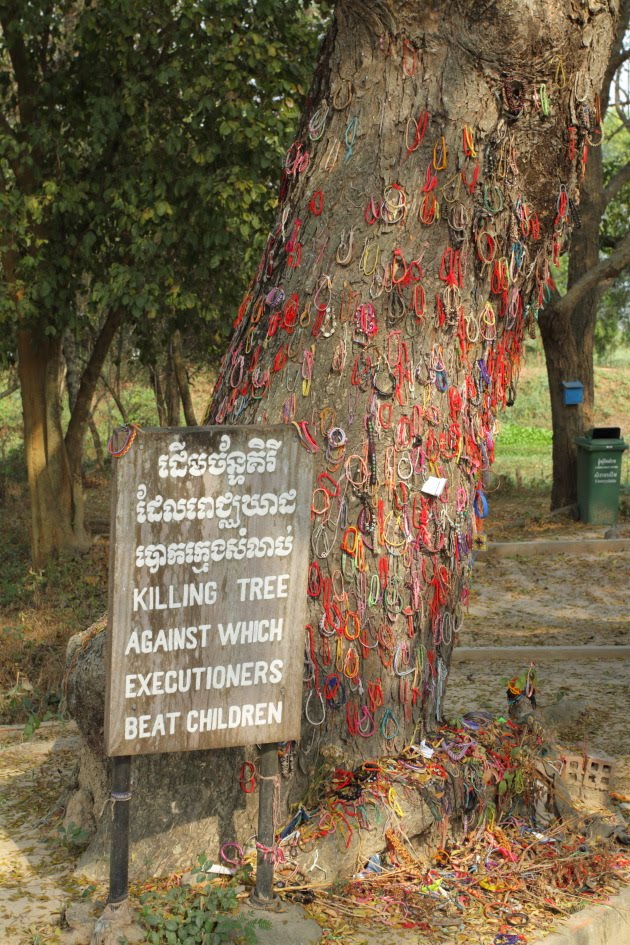
What the Nazi regime did to Europe, the Khmer Rouge did to Cambodia. There were concentration camps in Europe. There are killing fields in Cambodia. The Khmer Rouge absolutely terrorized the people of this country. Multiple genocide at different parts of the country was the norm. Both men and women were slaughtered. These cruel people did not even spare the babies. Locals still manage to locate skulls and bones from these killing fields after a spell of heavy rains. I don’t mean to scare you, but if you visit the killing fields of Choeung Ek (just outside of the capital of Phnom Penh) and listen to the tales of terror through the audio guide, you cannot help the tears from flowing down. These killing fields offer a very humbling experience and a good insight into the bitter past of Cambodia.
